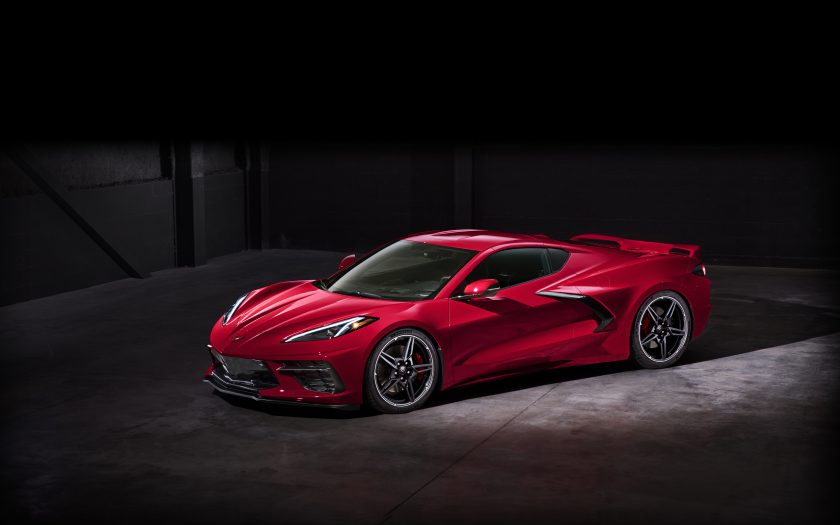IT’S BEEN A LONG TIME coming, but General Motors Holden confirmed today that the next generation mid-engine Corvette will be built in right-hand-drive (RHD) and will be for sale in Australia. “Finally!” cry the GM faithful.
“Like anyone with a hint of petrol in their veins, we were glued to our screens watching the reveal of the new Corvette,” said Dave Buttner, Chairman and Managing Director of Holden. “The news that Corvette will now be built in right-hand-drive for the first time ever – and will be exported to Australia – is hugely exciting for our team at Holden and any Australian who loves high performance cars.”
“With our long history in motor-racing, performance vehicles are an indelible part of the Holden brand. Our team is totally revved up to build on Holden’s performance legacy with the most technologically advanced Corvette ever built.
“We look forward to taking on the European and Japanese performance vehicles with some highly sophisticated American muscle.”
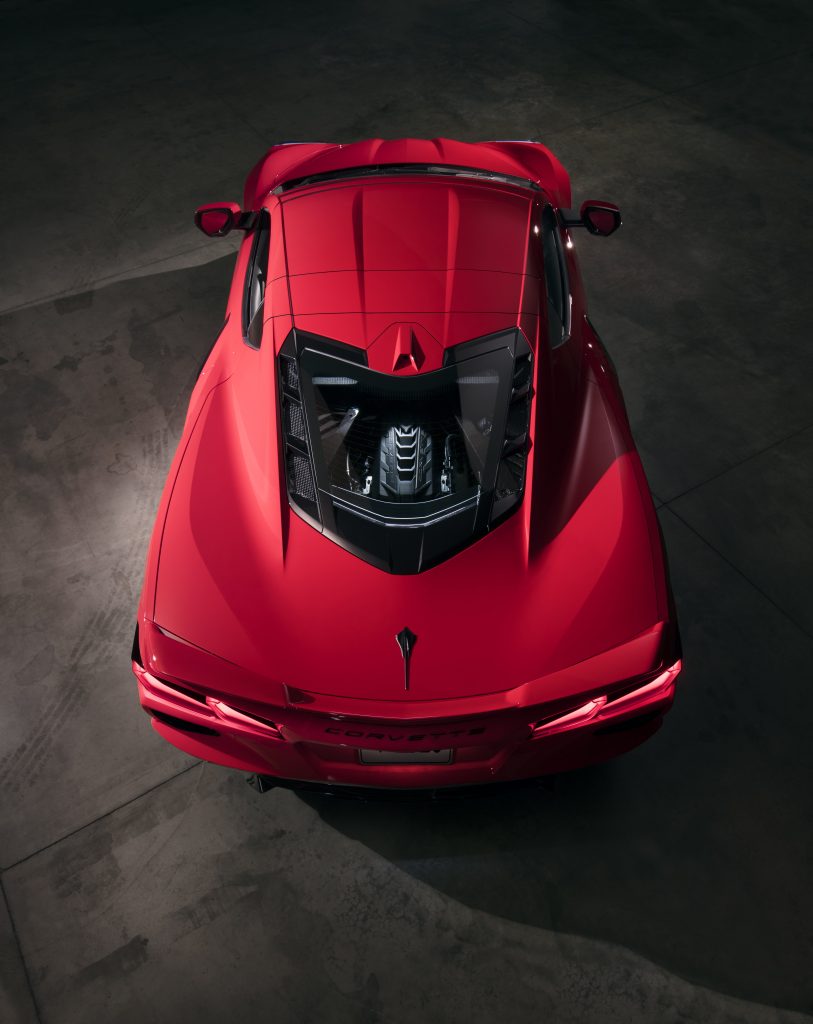
Mid-engined, fastest and most powerful
The new Corvette is the first-ever production version in mid-engine configuration. It is also the fastest, most powerful entry-level Corvette, offering new standards of performance, technology and craftsmanship.
“Corvette has always represented the pinnacle of innovation and boundary-pushing at GM. The traditional front-engine vehicle reached its limits of performance, necessitating the new layout,” said GM President Mark Reuss (another GM man with cars in his blood, as he showed when he spent time in Australia as local CEO). “In terms of comfort and fun, it still looks and feels like a Corvette, but drives better than any vehicle in Corvette history. Customers are going to be thrilled with our focus on details and performance across the board.”
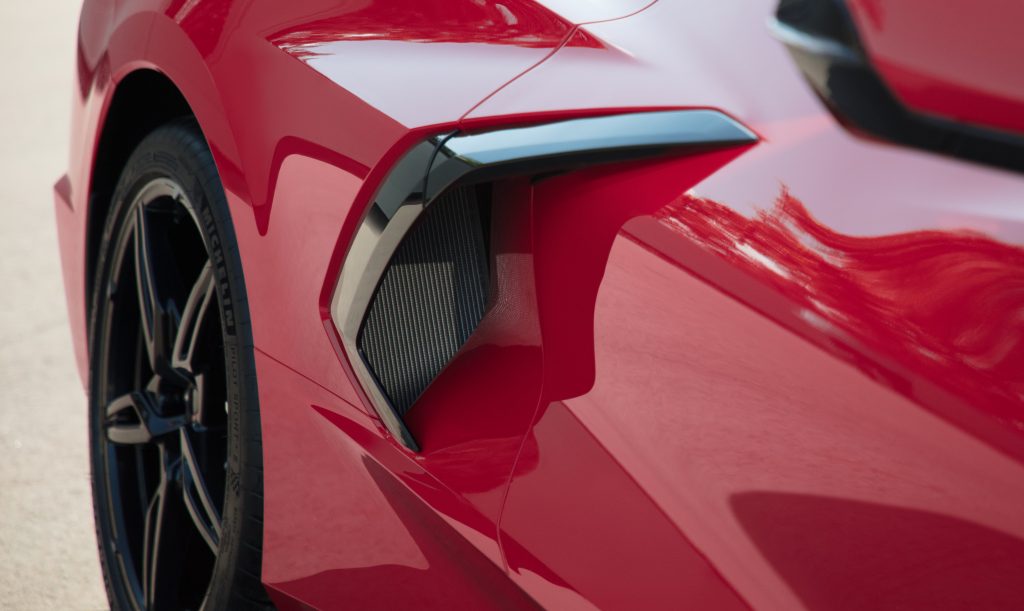
The new mid-engine layout gives Corvette:
- Better weight distribution, with the rear weight bias enhancing performance in a straight line and on the track.
- Better responsiveness and sense of control due to driver positioning closer to the front axle, almost on top of the front wheels.
- The fastest 0 to 60 (0 to 96km/h) time of any entry Corvette ever — approximately three seconds when equipped with Z51 package.
- A race car-like view of the road due to lower positioning of the hood, instrument panel and steering wheel. Excellent forward sightlines throughout the vehicle for both driver and passenger.
- An enhancement of Corvette’s traditional utility strengths with dual trunks, ideal for luggage or two sets of golf clubs.
The Corvette’s exterior has a bold, futuristic expression with mid-engine exotic proportions, but it is still unmistakably Corvette. It is lean and muscular, with an athletic sculptural shape conveying a sense of motion and power from every angle.
“As America’s most iconic performance nameplate, redesigning the Corvette from the ground up presented the team a historic opportunity, something Chevrolet designers have desired for over 60 years,” said Aussie Mike Simcoe, Vice President of Global Design, General Motors and best known for designing the V2 Monaro. “It is now the best of America, a new arrival in the mid-engine sports car class. We know Corvette can stand tall with the best the world has to offer.”
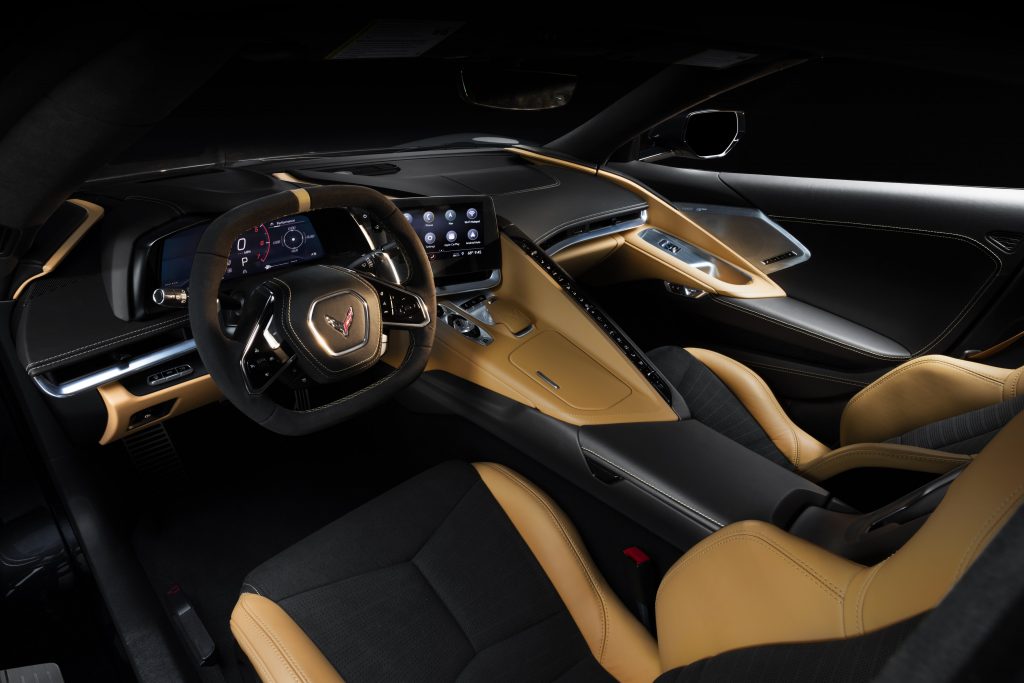
Higher levels of finish
A supercar level of craftsmanship, premium materials and attention to detail were critical in designing every component of the Corvette. The new location of the engine is truly the focal point for the car’s design, visible through the large rear hatch window. The added attention to detail optimised the appearance of every wire, tube, bolt and fastener, similar to those found in modern track and all-road motorcycle design.
The next generation Corvette’s canopy-forward stance was inspired by F22s, F35s and other modern fighter jets and Formula One racing. Other classic Corvette signatures adapted to the next generation car include a distinctive face that communicates the purpose of the vehicle’s mission, a classic horizontal crease, aggressive front fenders and familiar positioning of the dual-element headlamps.
Corvette’s structure is built around its backbone: the centre tunnel. This enables a light, stiff structure to serve as the foundation for the suspension system to perform in an optimised manner. By removing unwanted body compliance, Corvette customers will experience the ultimate in ride performance with outstanding lateral grip capabilities. The car has a solid, connected-to-the-road feel with minimal vibrations at high speeds or on long road trips.
The Corvette is designed for superior ride comfort on the highway and well-balanced handling on the track.
“Thanks to sophisticated suspension geometry, tailored tyre technology and exquisite attention to structural details, we have improved ride and handling,” said Tadge Juechter, Corvette Executive Chief Engineer. “No Corvette has ever felt so comfortable, nimble and yet completely stable.”
The new Corvette features coil over dampers that create entirely new ride and handling characteristics. The mid-engine architecture allows for a short, straight and stiff steering system, coupled with an updated electronic steering system, making the driver’s chassis input instantaneous.
The new seating position places the car’s centre of gravity close to the driver’s inside hip, so the car literally turns around the driver. It completely changes the perception of vehicle handling and responsiveness.
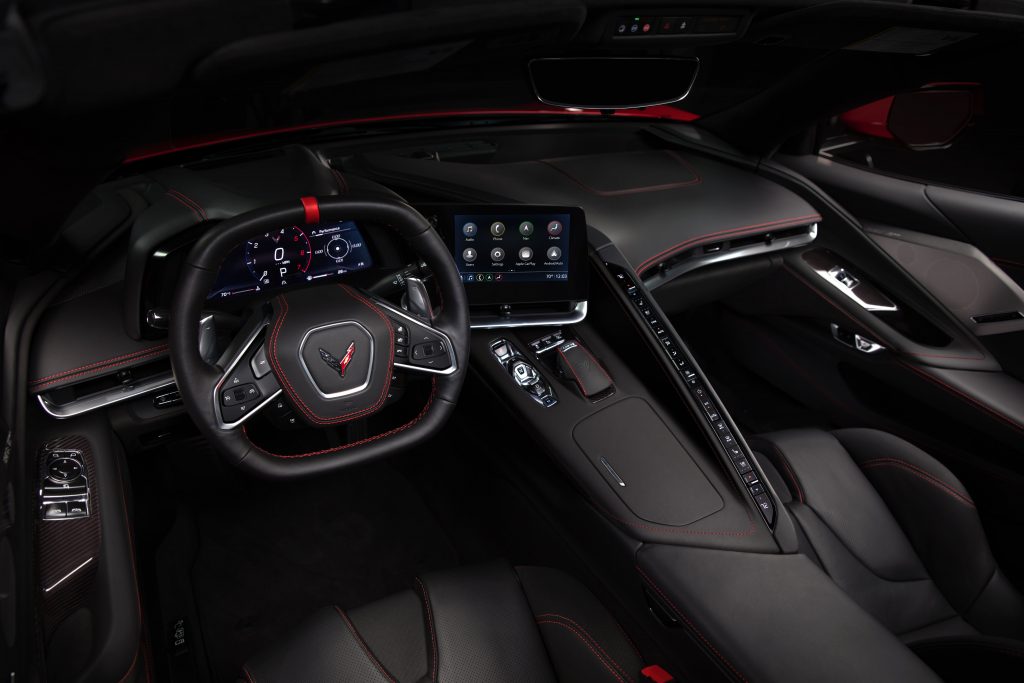
The engine Corvette fans expect
The new Corvette’s heart is Chevy’s next-generation 6.2L small block V-8 LT2 engine, the only naturally aspirated V-8 in the segment. It will produce 495 horsepower (369 kW) and 470 lb-ft (637 Nm) of torque when equipped with performance exhaust — the most horsepower and torque for any entry level Corvette.
“Though now placed behind the driver, the LT2 gives the same visceral experience we all expect from Corvette,” said Jordan Lee, GM’s Global Chief Engineer of Small Block engines. “The LT2 has been designed to deliver excellent low-end torque and high-end power to give thrilling pedal response at any RPM.”
The LT2 is paired with Chevrolet’s first eight speed dual-clutch transmission, which provides fast shifts and excellent power transfer. This transmission is uniquely designed with TREMEC to provide the best of both worlds: the spirited, direct connected feeling of a manual and the premium driving comfort of an automatic. The double-paddle de-clutch feature even allows the driver to disconnect the clutch by holding both paddles for more manual control.
Paddle shifters allow drivers to choose a specific gear. The performance shift algorithms are so driver-focused, they can sense spirited driving — regardless of driving mode — and will hold lower gears longer for more throttle response.
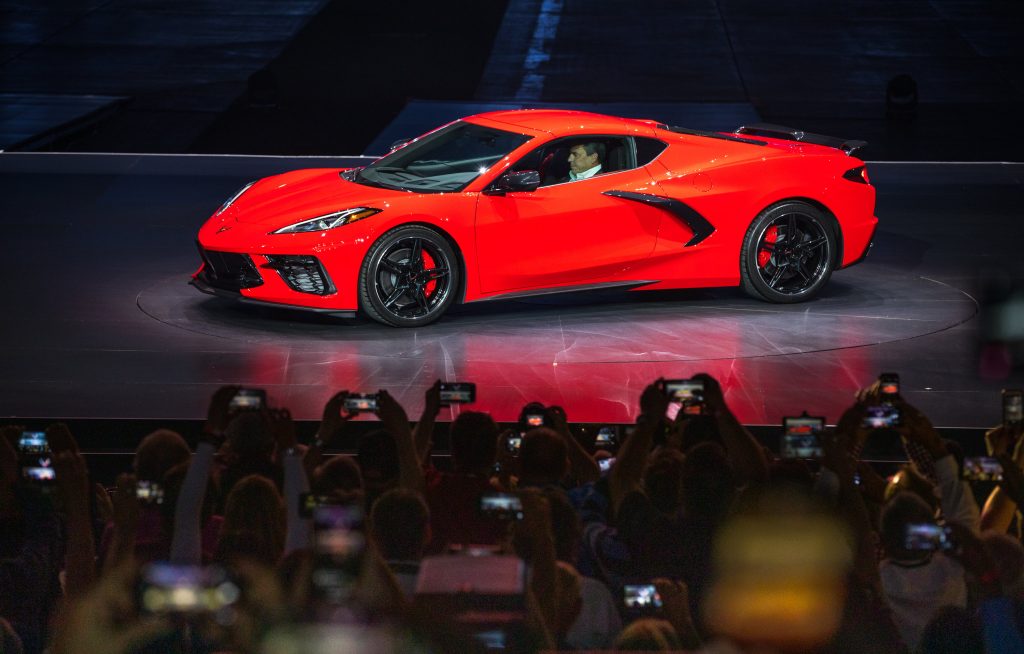
The new Corvette benefits from GM’s new digital vehicle platform, an all-new electronic architecture that enables the adoption of the company’s next generation of technologies. The architecture minimises wiring while allowing for faster signal transmission between different vehicle systems and the higher resolution screens, and also enable enhanced cybersecurity measures.
Next generation Corvette production begins at GM’s Bowling Green facility in late 2019. Holden will share further details about Corvette in Australia at a later date.
We can’t wait.
